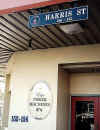FAQ & Feedback about
Navigator's Paradise
(See
Street Signs for background to this FAQ)
We don’t need more signs in our area.
Of course you don’t! You don’t even need the ones already there. Street name
signs are for visitors. You need them in other people’s areas. They need them in
yours.
We have too many signs already. They cause visual pollution.
Often true of billboards. But street name signs, like other traffic control signs, are
essential. Most street name signs are not even noticed except by those looking for them.
Councils can’t afford to put up all those missing signs.
Perhaps not all at once, but they can budget enough over a period of years to gradually
fill in the gaps. What it costs to pave and gutter a street can buy 2000 - 3000 street
name signs. It’s a matter of priorities.
Why should councils provide kerb numbers?
Because that’s the only way 100% of properties will get their numbers on the kerb.
When that happens, motorists can easily follow these numbers to their destinations by just
glancing at the kerb. Having to search all over gardens and footpaths trying to "pick
up a number" will be history.
Kerb numbering will cost councils too much.
Relatively little. Providers can charge much less per house if given entire streets to
number. Again, it’s a matter of budget priorities. Feedback suggests people would be
willing to pay a levy if necessary to fund council-wide kerb numbering. The number of
addresses already on kerbs shows a high level of community support.
With property numbers on the kerb, why do we need them on the signs?
The emergency services asked for these when we spoke to them before starting our kerb
numbering for Navigator’s Paradise. They tell whether a driver needs to turn right or
left for the number he wants. Without them, there’s a 50% chance of turning the wrong
way. This is an irritation for all of us, but for the emergency services, the delay
involved in turning around can mean the difference between life and death. Feedback
indicates these numbers are highly valued by motorists and should be used not just on main
roads, but anywhere a decision to turn right or left has to be made.
Why this new wedge notation? What’s wrong with the usual way of showing addresses?
Several things:
 | Numbers usually shown, say 12-20, refer only to the side of the street where the sign
is. Numbers on the opposite side are ignored and the driver must still guess which way to
turn if he’s looking for, in this case, an odd number. Some signs do show both sets,
say 12-20 & 9-15. Four numbers like this are usually more than a driver can take in,
process, and act on safely, without hesitation. In an effort at completeness, the numbers
across the intersection are sometimes included as well, making eight numbers to be
absorbed!
| No driver can take in all this information without stopping. |
| . |
|
 |
| Ambiguities arise when a range of numbers is shown. If a sign shows 9-15
from the road, should it show 15-9 from the footpath? If it shows 8-22 and extends left
from the pole, which property is closest to the pole, 8 or 22? Anomalies and errors exist
all over Sydney. |
 |
| . |
|
 | Councils do not use uniform notation. One northside council displays two sets of numbers
but instead of 12-20 and 9-15, they show 12-20 and 22-34, indicating numbers on both sides
of the intersection, not both sides of the named street. Another council shows a single
tiny number at one end of the sign and another at the other end. Feedback shows a desire
for more uniformity especially in the display of property numbers. |
Nobody knows what the wedge means.
Yes, the scheme does need an education campaign, which is one of the functions of the
pilot project. It is easy to understand once explained, and the benefits are worth the
effort. Roundabouts, clearways and transit lanes once had to be explained, but these
have all became part of the public’s knowledge bank.
Won’t drivers confuse wedge notation with existing notation?
No. The two can co-exist because the wedge symbol instantly identifies the new scheme.
There will still be appropriate uses for the "range" notation, as when
indicating that certain addresses are, say, down a laneway. For most signs, wedge notation
would gradually replace other schemes. This will take years, but that’s OK.
Do we really need suburb name on a sign?
In metropolitan areas, yes. Sydney has over 700 suburbs, all standing shoulder to
shoulder, and some roads run through many suburbs. A lost motorist needs to know the
suburb he’s in to use his street directory.
Our council has just installed brand new street signs. Are you saying to throw them out
and use your design?
Absolutely not. Do not replace existing serviceable signs, new or old. Spend your money
instead on putting up missing signs, using the new format. It will take many years for all
signs to reflect the new standard, but the important thing is to adopt and start using
such a standard now.


Page created - 24 December, 1998. Page last updated - 14 August, 2006 15:08:49 +1000
![]()